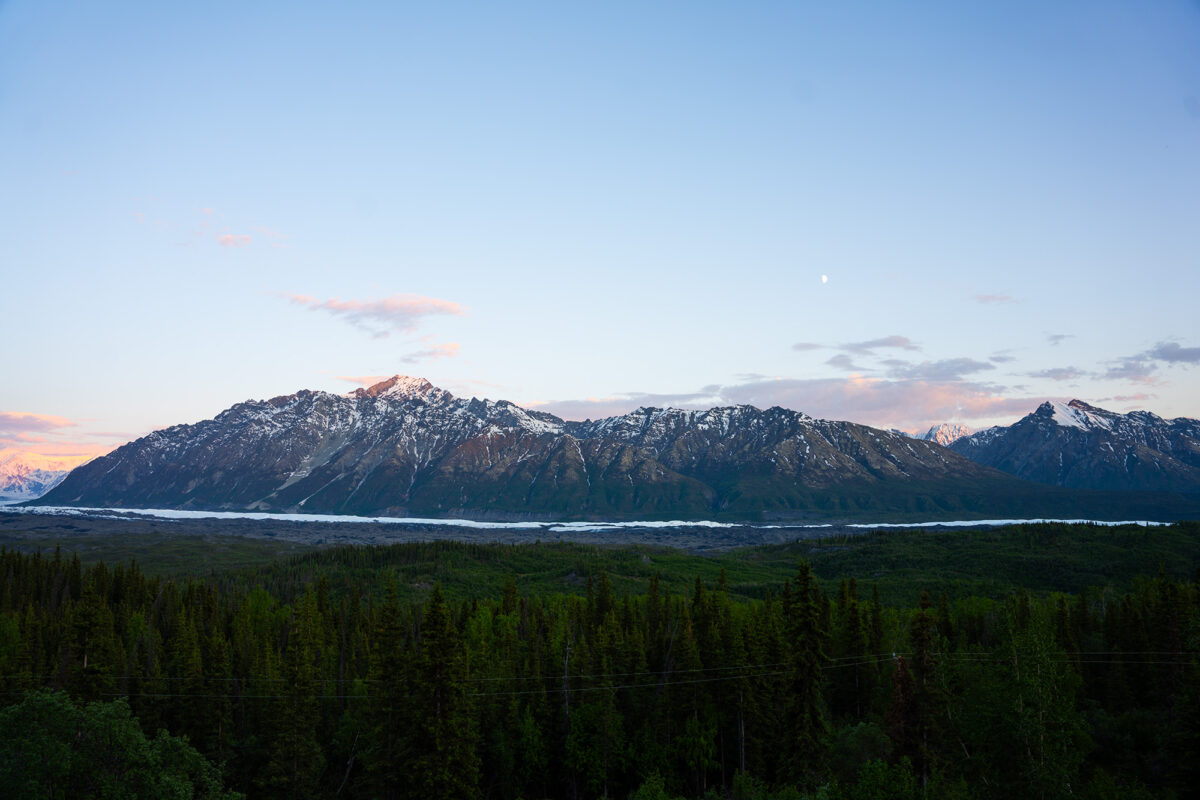Matanuska Glacier Education
Matanuska Glacier Geology: A Brief Exploration
Geological Features of Matanuska Glacier
Glacier Formation and Composition
The Matanuska Glacier is a valley glacier flowing down a valley formed by river erosion. It is primarily composed of ice, firn, and snow. Over thousands of years, layers of snow compress into dense glacial ice, forming the glacier’s mass.
 Moulins: The Glacial Mills
Moulins: The Glacial Mills
Moulins are vertical shafts within the Matanuska Glacier that allow surface meltwater to travel down to the glacier’s base. These fascinating ice tunnels can be several meters in diameter and can extend deep into the glacier, sometimes reaching the bedrock.
Formation of Moulins
Moulins form when meltwater on the glacier’s surface finds a weak point or crevasse and begins to flow downward. As this water descends, it melts the surrounding ice, creating a vertical tunnel that can become quite extensive over time. The formation of moulins is influenced by various factors, including surface temperature, the volume of meltwater, and the glacier’s internal structure.
Importance of Moulins
Moulins are crucial for understanding glacial hydrology. They act as conduits for surface meltwater to reach the glacier’s base, which can lubricate the interface between the glacier and the bedrock. This lubrication can affect the glacier’s flow, potentially accelerating its movement and increasing ice loss. By studying moulins, scientists gain insights into the internal water drainage systems of glaciers and the impacts of climate change on glacial dynamics.
Exploring Moulins
Exploring moulins provides a unique opportunity to observe the inner workings of a glacier. These deep ice tunnels reveal the processes of melting and refreezing that occur within the glacier. For researchers and adventurers alike, moulins offer a window into the hidden and dynamic world of glacier interiors, showcasing the complex interplay of ice and water.
Glacier Caves: Natural Ice Sculptures
Glacier caves, or ice caves, form when meltwater carves tunnels and chambers within the glacier. These caves, with striking blue ice formations, offer insights into the processes of ice melting and refreezing.
Formation and Exploration of Glacier Caves
Glacier caves form primarily through melting and refreezing. Meltwater carves out tunnels that expand over time. Exploring these caves reveals the glacier’s internal dynamics and showcases the beauty of natural ice formations.
Crevasses: Glacial Fractures
Crevasses are deep cracks in the glacier’s surface, formed due to stress from glacier movement over uneven terrain. They offer valuable insights into the glacier’s flow dynamics and structural integrity.
Moraines: Glacial Deposits
Moraines are accumulations of debris transported and deposited by the glacier. They include lateral moraines (along the glacier’s sides), terminal moraines (at the glacier’s terminus), and medial moraines (formed when two glaciers meet). Moraines provide evidence of the glacier’s historical movement and changes.
Glacial Till: Unsorted Glacial Deposits
Glacial till is an unsorted mix of clay, sand, gravel, and boulders deposited as the glacier retreats. It reflects the diverse terrains the glacier has traversed and is essential for understanding the glacier’s history and regional geology.
Conclusion
The Matanuska Glacier is a geological marvel, showcasing features like moulins, glacier caves, crevasses, and moraines. These elements illustrate the dynamic processes of glaciation and offer a rich tapestry of geological phenomena for study and exploration.

